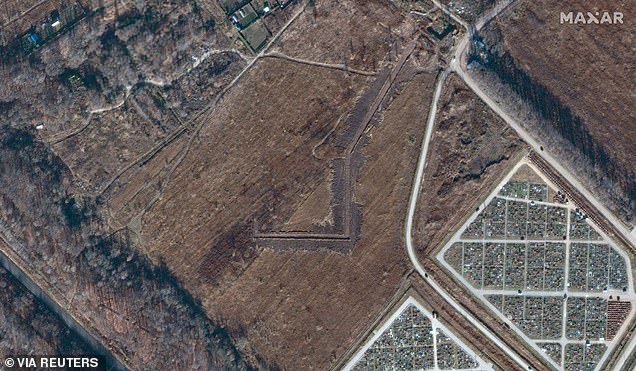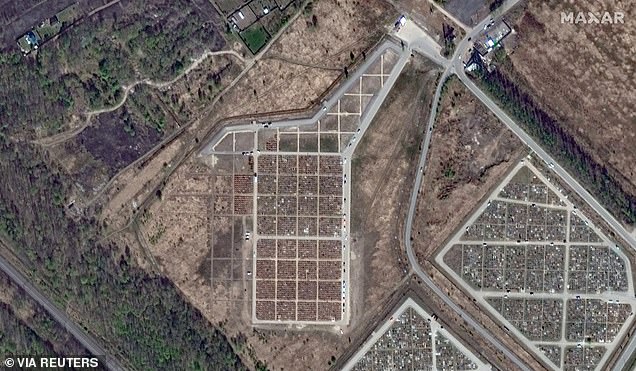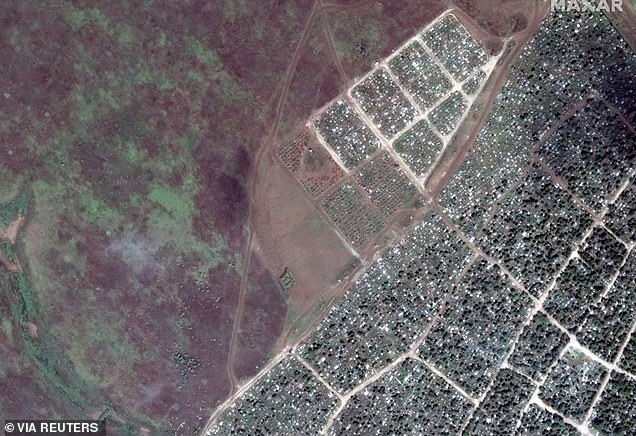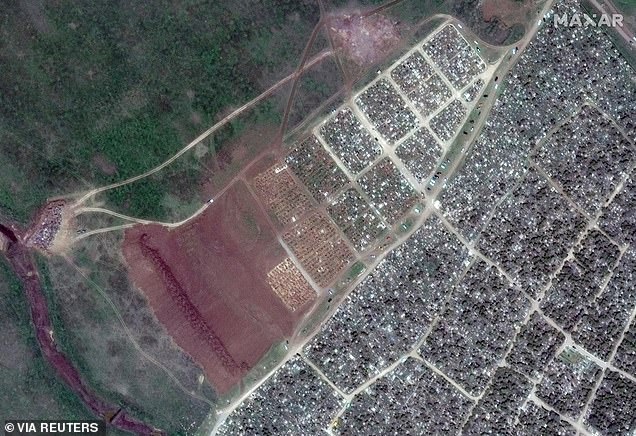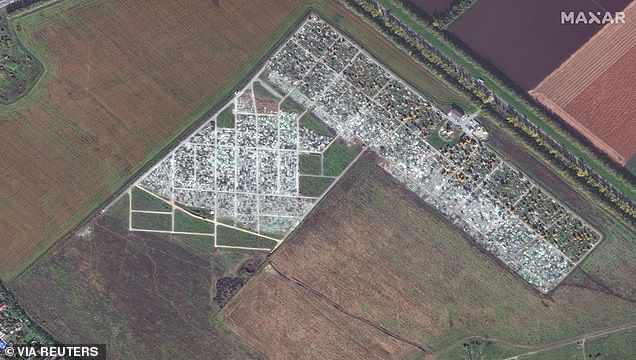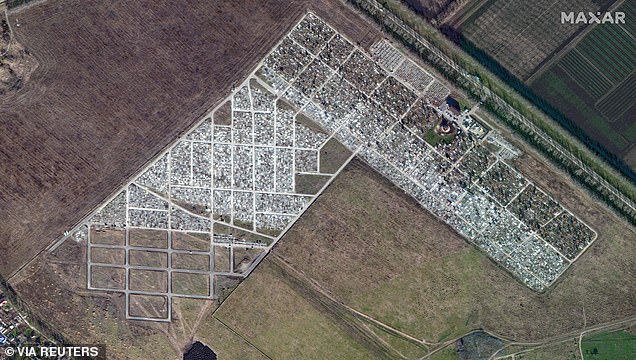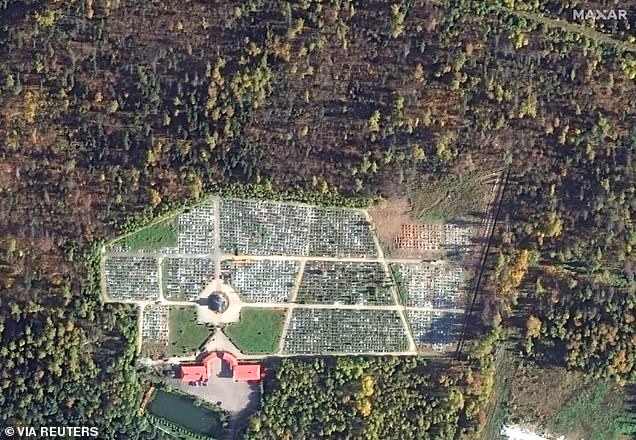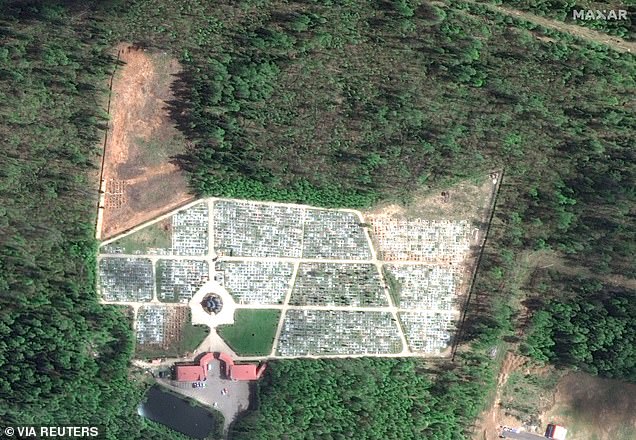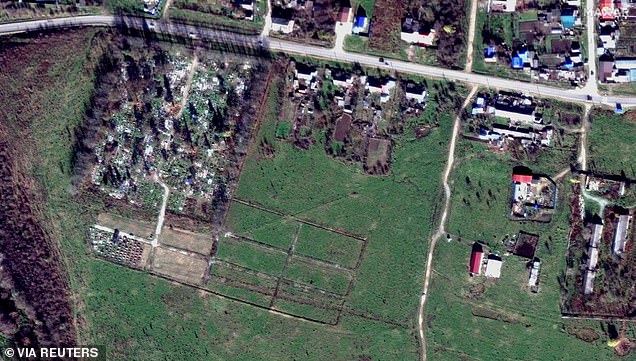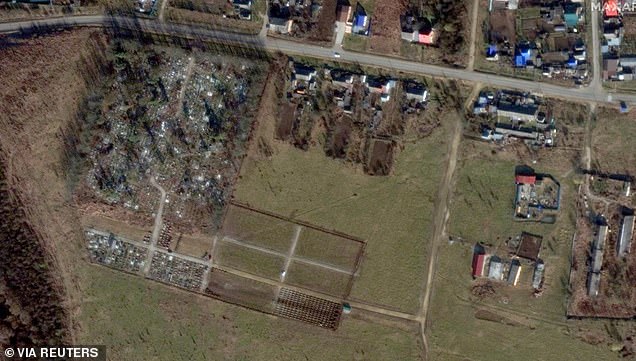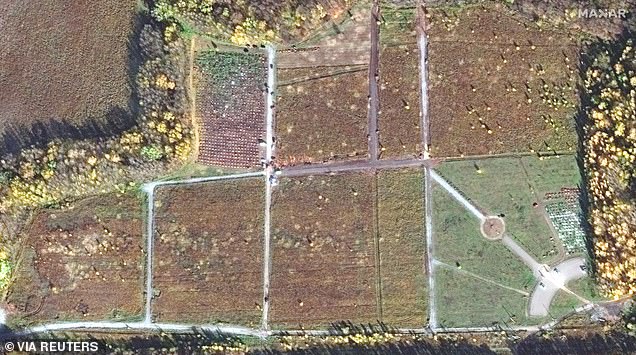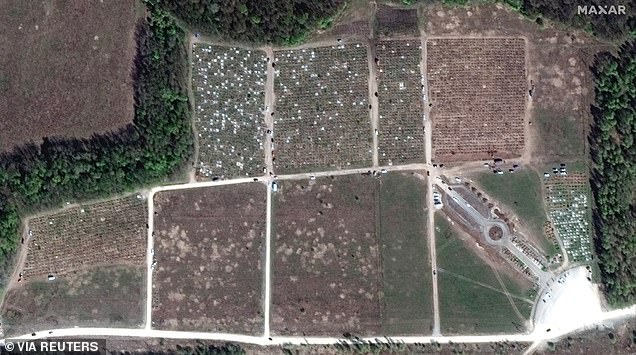- Russian cemeteries have been massively expanded over the past few years
- Russia does not publish an official number of soldiers killed in Ukraine
- In one cemetery, the number of graves quadrupled in a year and a half
<!–
<!–
<!– <!–
<!–
<!–
<!–
New satellite images have revealed how cemeteries containing the remains of Russian troops have been massively expanded since the nation invaded Ukraine.
The images, taken by private satellite company Maxar Technologies, show that the final resting places of many of Russia’s elite military units, including the Wagner mercenary group, have multiplied in size.
Images of just one section of the Tula cemetery in Moscow show that the number of graves dug quadrupled between October 2021 and April 2023.
Elsewhere in Moscow, Bogorodskoye Cemetery has apparently tripled in size, with another section added over the same period.
The new images significantly visualize the large number of Russian soldiers who have died in the fight against Putin’s invasion of Ukraine.
A satellite image shows an overview of Bogorodskoye cemetery, near Ryaza
A satellite image shows an overview of Blyzhnie cemetery, near Feodosiya
A satellite image shows an overview of Mikhaylovsk cemetery, near Stavropol
While the Kremlin does not publish official statistics on the number of troops killed during the invasion of Ukraine, there have been widely varying estimates.
Britain’s MoD believed that up to 70,000 Russian soldiers have died. Independent media Mediazona and Meduza, meanwhile, believe that up to 88,000 soldiers died by the end of 2023.
Their estimates were based on public obituaries and official probate records.
But the US believes the figure could be as high as 120,000, while Ukraine last month claimed up to 180,000 had died.
Research by The Economist claimed that a quarter of Russian soldiers killed are from regular military units, another quarter are from volunteer corps, and the rest are convicts who have been offered a commuted sentence in exchange for a stay on the front lines.
While Russia has suffered staggering losses, Ukrainian troops and allies have also suffered enormously.
A satellite image shows an overview of the Lazarus cemetery, near Alabino
A satellite image shows an overview of Bakinskaya cemetery
A satellite image shows an overview of the Tula cemetery
A Briton who went to Ukraine to fight Russian invaders after being inspired by Liz Truss killed himself after suffering PTSD, an inquest has been told.
The family of Harry Gregg, 25, whose only previous military experience was in the army cadets, say he was traumatized by trench warfare and seeing comrades die.
They said after the hearing that Mr Gregg, from Thetford in Norfolk, chose to serve after then Foreign Secretary Mr Truss said she ‘absolutely’ supported anyone helping Ukrainians to fight for their freedom.
Her comments, made shortly after the February 2022 Russian invasion, were criticized at the time by Conservative colleagues who said it would be reckless and illegal to go and fight – while Downing Street distanced herself from her remarks.
Sir. Gregg’s mother Sandi Gregg told Norfolk Coroner’s Court that her son’s mental health had been left “very badly” when he returned to the UK.
She added in a statement: ‘He suffered badly from PTSD after fighting on the front line in Ukraine. Unfortunately, he couldn’t find any help for that.’
Sir. Gregg was due to go karting and clubbing with friends on December 14 last year to celebrate his 25th birthday but they were unable to contact him, she said.
The next day, still not hearing from him, they called for a check and his body was seen through the letterbox at Mr Gregg’s home.
He was found hanging and paramedics pronounced him dead at the scene.

